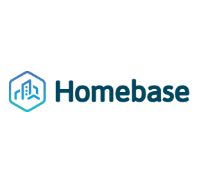Tendril: Utilities need to innovate in a way that is both environmentally conscious and economically healthy
 David Grant, Senior Vice President of Sales and Marketing at Tendril, provides insight on several key industry trends before joining the 2016 Smart Energy Summit in Austin:
David Grant, Senior Vice President of Sales and Marketing at Tendril, provides insight on several key industry trends before joining the 2016 Smart Energy Summit in Austin:
What do you think is the most challenging issue for your company as it relates to the residential energy management market?
Utilities need to innovate in a way that is both environmentally conscious and economically healthy. However, the unique thing about the energy industry is that it goes against the grain of innovation and profitability. In most industries, innovation leads to product improvements, lower costs and higher revenue. Think about the TV you owned ten years ago compared to the TV you own today. Televisions have gotten bigger, thinner and smarter, all while becoming more affordable. In typical industries like electronics, innovation fuels better products, those companies sell more, profits grow, and market share is won. In the energy industry, environmental concerns, rightfully so, are driving providers to help their customers use less of their product, and to do so in a greener way which often adds cost -- all without the assurance of protecting revenues and profits.
Thus, a major challenge of accelerating innovation and achieving a greener, more sustainable energy future exists in the regulatory environment. What’s needed is a new partnership between the regulating bodies and business to create a win-win for both utility and consumer. Otherwise, we will continue to see a slow pace of innovation and change in this sector.
What are the major challenges that your business must address in 2016? In 2020?
One of the challenges as the energy industry moves into its next phase is getting regulatory support and financial incentives for innovation. All too often the regulatory environment has not worked out the incentives for customers and providers to adopt innovative alternatives. For example, if a utility can show that they need to build a new $1 billion power plant, they are approved to build it and rate base it -- providing the incentive for the utility to continue on with the status quo. But what if a virtual power plant fueled by DERs like renewables, CHP units and storage could eliminate the need for the new plant all together? Regulators embracing and promoting incentives for innovation would greatly speed up the modernization of the industry.
What are the major barriers impacting consumer adoption of energy related products and services?
Energy is not a risk that needs to be mitigated. The utility has done a great job of making energy in the United States inexpensive and easy to access. This double-edged sword makes energy products and services an afterthought to consumers, only taking notice when their electricity is no longer there.
Energy products and services have traditionally been thought of as dull and unsexy. Nor does the thought of energy products serve up instant gratification. Think about it like buying a new car versus buying new tires. When you buy a new car it may not be necessary or even practical, but you are immediately excited and happy with your shiny new purchase. If your new car is projected to gain better gas mileage than your old car, you’ve now also contributed to energy efficiency with little effort on your part, upping the scale of gratification. However, when it comes to buying new tires for a car, the purchase is practical and necessary, but the level of excitement on that purchase is minimal. New tires are also proven to increase gas mileage, but you’re not immediately seeing those figures like you would on a new car sticker. Like the tires of a car, energy products and services tend to be viewed as practical and necessary, but not sexy or immediately gratifying.
The question becomes how do we shift the consumer’s perception of energy products and services from dull and boring to exciting and desirable? It’s no longer just about convincing consumers to replace refrigerators and water heaters because eventually it will pay off. We need to demonstrate the value and prestige that things like smart thermostats, EV chargers, storage devices, and solar panels offer. And then we must communicate the value of these offerings, such as how the potential interoperability of these devices will centralize and simplify the way consumers manage energy throughout the home.
Further, there are several global movements to get people to care more about energy usage, and most people do want to be green. But consumers lead hectic, busy lives and strive for simplicity. Most consumers prefer the set-it-and-forget-it approach. For instance, as important as gas mileage is when you are buying that new car, who honestly thinks about their gas mileage every week? Most consumers are willing to make a one-time investment and commitment in time, but as it comes to ongoing actions, most won’t be willing to -- and shouldn’t have to -- manage it every day. The energy industry needs to take the burden off the customer and make it easy for them to have their good intentions realized.
What impact will smart products and smart home services have on consumer adoption of energy solutions?
Consumers are overwhelmed with the complexity in their lives and tend to opt for set-it-and-forget-it solutions wherever possible. To accelerate consumer adoption and meet energy efficiency goals faster, energy solutions must be smart, simple to use and work in the background of consumers’ lives. Smart products and smart home services present the opportunity to help the consumer achieve their energy goals, whether that be smaller carbon footprint, cost efficiency, comfort, etc., and do so in an unobtrusive and helpful way. As smart products and smart home services help to seamlessly integrate energy solutions into consumers’ everyday lives, we will see high adoption of those solutions and reach the point of achieving a meaningful carbon reduction.
David Grant will be speaking on the panel session "Success Stories in Energy Management" alongside speakers from Florida Power & Light, OGE Energy, Westar Energy, and the Wright-Hennepin Cooperative Electric Association.
For more information on the speakers or sessions at the year's Smart Energy Summit: Engaging the Consumer, visit www.ses2016.com.
Next: Comcast: The key to engaging consumers is finding a direct path to deliver the energy management experience at little cost or effort
Previous: Open standards are critical to the development of IoT: Insights from Silver Spring Networks




 David Grant, Senior Vice President of Sales and Marketing at Tendril, provides insight on several key industry trends before joining the
David Grant, Senior Vice President of Sales and Marketing at Tendril, provides insight on several key industry trends before joining the 











